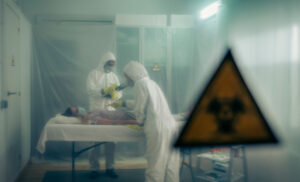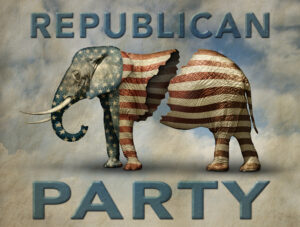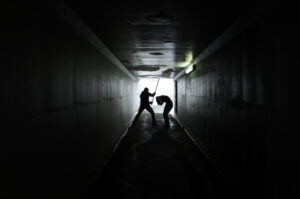The greatest volcanic eruption about which we know quite a lot
Lake Toba is in the middle of Northern Sumatra. It lies about two hundred miles from the epicenter of the magnitude 9.3 earthquake that devastated Asia in late December 2004, as its tsunami swept across the Indian Ocean. This lake is known as a caldera, the technical term for the crater formed by a volcanic eruption. It is a big lake, eighteen by sixty miles in extent and as deep as five thousand feet in places. The size of the lake can be attributed to Toba’s eruption, which was the largest that has occurred, anywhere on earth, within the past two million years. About 74,000 years ago a high volcanic mountain that stood on the area, now occupied by Lake Toba, erupted and blew skyward a mass of ash and volcanic debris that was three thousand times as big as the total amount that erupted from Mount St. Helens in 1980. The entire subcontinent of India was covered with ash. All around the globe sunshine was reduced and temperatures dropped by about 3 degrees, and stayed at that level for years. During that time, throughout the world, millions of all forms of life died. Thousands of species vanished.
The naysayers of our time are busy telling us that increases of carbon dioxide in the atmosphere will destroy human life and our cities before the end of this century unless we change our ways and reduce the present levels of carbon dioxide. Yet, beneath our feet are forces of change far more destructive for the earth’s environment and all of its occupants than anything that human activity has done or can ever do. Ordinary volcanic activity is familiar to us because we see it frequently. It is no surprise to visitors in Hawaii when magma pours on to the surface from deep volcanic vents. It is a common occurrence. Occasionally, however, a super volcanic eruption occurs—one that affects the entire globe. Fortunately, they appear rarely in human history but their destructive power is enormous and, unfortunately, their timing is not predictable. We give the name super volcanoes to them. Toba was one of these, the biggest of all of them within the last two million years with a Volcanic Explosivity Index (VEI) of 8. It is now the model by which geologists assess worst-case scenarios for the future.
There are only about half a dozen locations around the world where geologists have identified supervolcanoes. One location is in New Zealand, one in Japan, and one in Russia. In the United States there is one in Yellowstone National Park where there was an eruption of strength 8 on the VEI, about 640,000 years ago. That strength represents a tenth of Toba’s and a hundred times the strength of Krakatau. The past geological history of Yellowstone reveals that it builds up to the level of a super volcanic eruption approximately every 600,000 years so it is reasonable to say, as some geologists have already said, that another terrible explosion is overdue. Geological specialists have been checking the movement of magma deep below Yellowstone Park. The presence of this magma is well known by the surface manifestations of boiling hot springs and mud pots. Precise measurements over time show that the land within the caldera that is now Yellowstone rose thirty-five inches between 1923 and 1984. Later in the 1980s it subsided slightly.
A Yellowstone eruption on the scale of the previous one is a terrifying concept. It would transform all aspects of human life worldwide. The death toll would be huge. Although its VEI would only be one-tenth that of Toba, it would be disastrous. Tambora, an Indonesian volcanic eruption of 1815, was ten times stronger than Krakatau and only a tenth as strong as the ancient Yellowstone one yet it caused widespread destruction of life and agriculture all over the world. If no one wants to see a repeat of the ancient Yellowstone eruption, then it is even more certain that we do not want to see another Toba, especially since the scale of its destructive activity is now known through seafloor cores and ice cores from Greenland. From both of these data banks we can define climatic conditions around the time of Toba’s eruption. Overall it is clear that the dust cloud from the explosion, one that reached high into the atmosphere because it happened near the equator, reduced the amount of sunshine that could reach the earth. Thus, temperatures worldwide were lowered by as much as seven degrees Fahrenheit and this condition remained for more than seven years. Had the eruption occurred near the North Pole the atmospheric dust would have stayed at a lower level within the atmosphere.
It is tempting to think that once the seven or more years had passed everything would come back to its former state. The reality was quite different. To begin with, the eruption coincided with one of the last phases of the last Ice Age, the Wisconsin Ice Age. The years of lower temperatures were an addition to the influences that ice was already exerting on the environment. Overall, geologists concluded that the damage caused by Toba was similar to the scenario drawn up by scientists for the effects of a nuclear war, generally described as nuclear winter. The aftermath of this global environmental disaster was most severe in tropical areas where vegetation is unprepared for coldness. In these tropical areas all the plant tissues above ground would die. Even temperate forests would suffer from the relatively sudden drop in temperatures and 50 percent of them would die. Large amounts of dead wood, aided by drought, typical of ice age regimes, would likely lead to an increase in forest fires. The story would be similarly destructive for life in the oceans but the elements involved would be different.
Geneticists believe that Toba had a particularly catastrophic effect on humans who, 74,000 years ago, were still at an early stage of development. The population on Earth may have been reduced to a few thousand people, pushing humanity to the edge of extinction. Homo sapiens had become an endangered species. The evidence for the catastrophic reduction of numbers around the time of Toba comes from an analysis of mitochondrial DNA that revealed a limited genetic diversity, far lower than the known age of humans would indicate. The total numbers of humans in the years following Toba seemed to be no more than ten thousand. Not until 50,000 years ago, 20,000 years after Toba, was there evidence of a rapid and widespread increase in the numbers of humans. In order to test the validity of their calculations regarding humans, geneticists examined the mitochondrial DNA of chimpanzees to find out if they too had been victims of the same environmental disaster. The results were conclusive. They had experienced a bottleneck similar to human DNA.






















